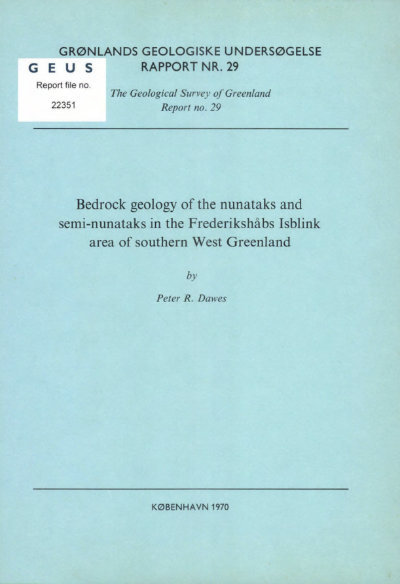Bedrock geology of the nunataks and semi-nunataks in the Frederikshåbs Isblink area of southern West Greenland
DOI:
https://doi.org/10.34194/rapggu.v29.7239Abstract
The Precambrian geology of an area of 250 km2 within the old gneiss block ofWest Greenland is described. The area is composed of a gneiss-granite-amphibolite complex which is cut by later basic dykes. The largest part of the complex is made up of folded and migmatised biotite-, hornblende- and epldotebearing gneisses in which granodiorites and adamellites can be mapped as separate granite units. Different types of amphibolites and ultramafic rocks occur in the complex. The oldest amphibolites occur as migmatised and folded inclusions and tracts within the gneisses and these are cut by different generations of metabasite dykes which are themselves migmatised and deformed. Metavolcanic rocks containing pillow lavas and metagabbro layers exist on some nunataks and these are considered to form cover rocks to an earlier basement. Aspects of the deformational and metamorphic history are discussed. At least six main phases of deformation ean be recognised in rocks which are polymetamorphic. The gneisses and granites of the complex display amphibolite facies mineralogy but greenschist mineral assemblages characterise some of the amphibolite and ultramafic rocks. Relics of an early high-grade metamorphism, possibly reaching granulite facies conditions, are preserved in some basic rocks. The basic dykes which cut this polymetamorphic complex vary from dolerite to lamprophyre. The late tectonism and metamorphism is described. An attempt is made to place the area into the regional chronology of this part of West Greenland.
Downloads
Published
Issue
Section
License
This article is distributed under a CC-BY 4.0 licence, permitting free redistribution and reproduction for any purpose, even commercial, provided proper citation of the original work. Author(s) retain copyright over the article contents.


